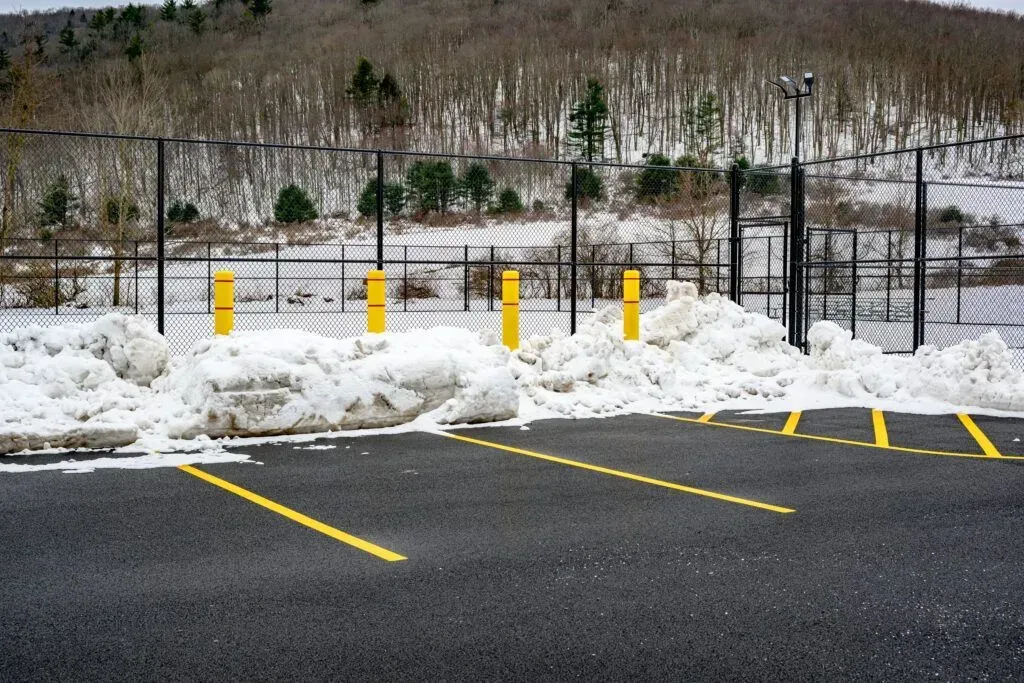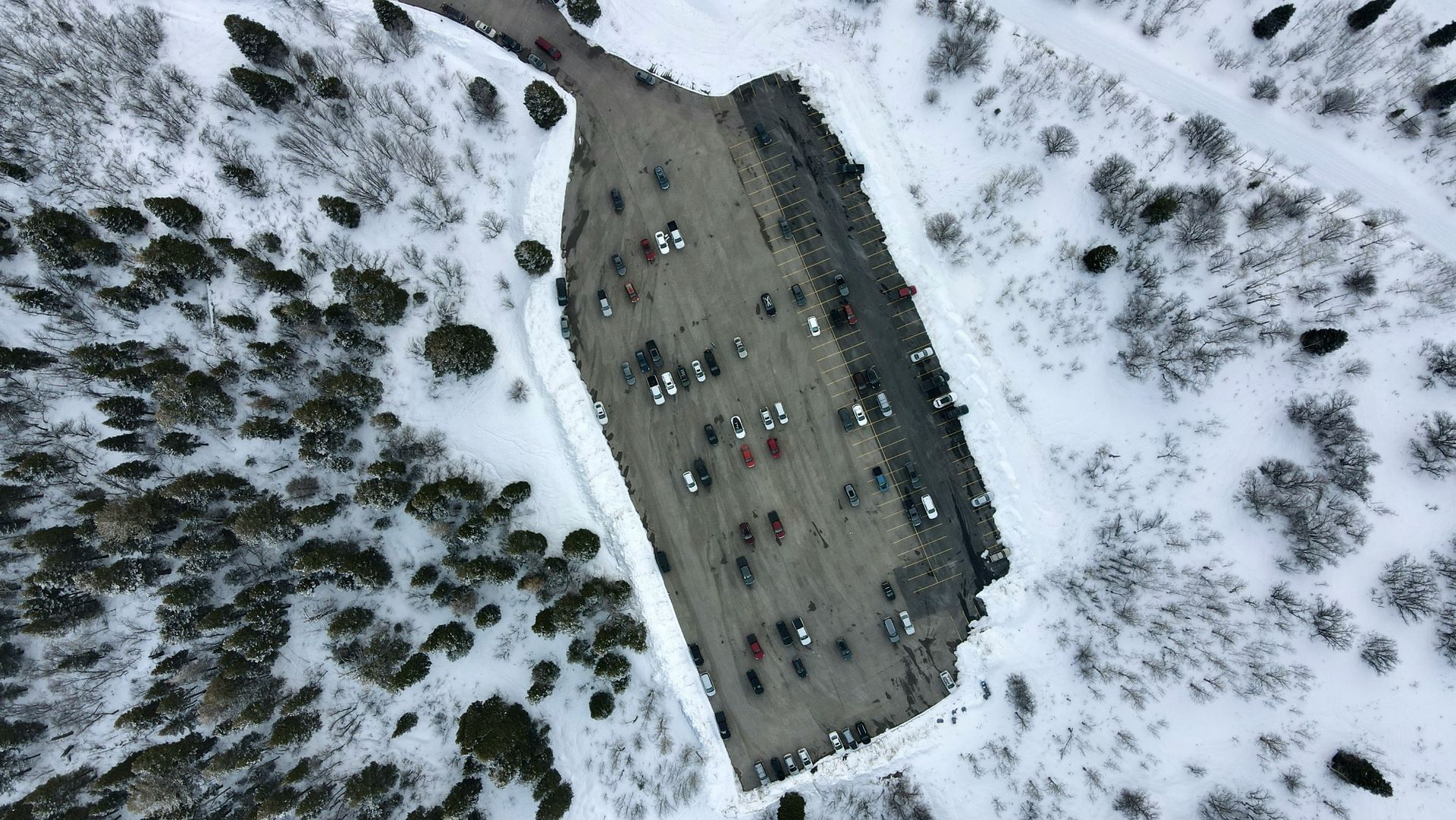How Cold Weather Impacts Asphalt
As the temperatures start to drop and frost begins to settle in, asphalt surfaces across the Midwest brace for a seasonal test of durability.
Whether it's a commercial parking lot, municipal roadway, or private drive, cold weather can cause significant stress on asphalt if it's not maintained correctly.
Understanding how winter affects your pavement and what you can do to protect it can save you costly repairs and extend the life of your investment.
The Science Behind Cold-Weather Damage
Asphalt may look solid and unyielding, but it's a flexible surface designed to expand and contract with temperature changes. When winter hits, that flexibility is put to the ultimate test.
Cold temperatures cause asphalt to contract, leading to cracking, especially if the pavement already has minor fractures or weak spots from wear and tear.
But, that's only the beginning. When water seeps into cracks and freezes, it expands by nearly 10%. That expansion widens the cracks, pushing apart the pavement. Then, as temperatures rise and the ice melts, the water drains away, leaving small voids beneath the surface.
This freeze-thaw cycle repeats throughout winter, gradually weakening the structure until potholes, crumbling edges, and other surface failures appear.
If you've ever wondered why so many roads seem to break apart by spring, now you know. The culprit isn't just time or traffic; it's the relentless freeze-thaw process.
Salt, Snow, and Surface Stress
Deicing materials like road salt help keep surfaces safe, but can also be hard on asphalt over time. Salt works by lowering the freezing point of water, but the repeated cycles of melting and refreezing can accelerate deterioration.
Additionally, as salt and snowplows scrape across the surface, they can wear down sealcoats and protective layers, exposing the asphalt to even more moisture and oxygen.
While snow removal is essential, it's crucial to approach it with care. Metal plow blades that scrape too close to the surface can cause gouges or remove small chunks of asphalt.
Once that protective layer is gone, the pavement becomes much more vulnerable to future damage.

Common Signs of Cold-Weather Damage
Before winter fully sets in, it's smart to inspect your asphalt for early warning signs. Catching these issues now can prevent them from becoming bigger and more expensive problems later.
- Small cracks or surface fissures: Even hairline cracks can let water in, leading to significant freeze-thaw damage.
- Pooling water: Standing water after rain or snowmelt is a red flag for drainage issues.
- Uneven surfaces: Dips or depressions can indicate base layer problems.
- Worn or faded sealcoating: The darker, glossier finish of a sealcoat acts as your first line of defense. When it fades, the asphalt is exposed.
How to Protect Your Asphalt Before & During Winter
Now is the time to act. A few proactive steps before the first hard freeze can dramatically reduce winter damage and extend the life of your pavement.
- Seal cracks and joints. Crack sealing is one of the simplest and most cost-effective ways to protect asphalt. Filling in gaps prevents water from seeping below the surface, stopping freeze-thaw damage before it starts.
- Apply a fresh sealcoat. If it's been a few years since your last sealcoat, consider applying one before temperatures drop too low. A sealcoat acts as a protective barrier against moisture, salt, and oxidation.
- Check drainage and grading. Proper drainage ensures that water doesn't pool or freeze on the surface. Cleaning out catch basins, ensuring slopes are correct, and removing debris can make a big difference.
- Plan snow and ice management carefully. Use rubber-tipped plow blades and avoid aggressive scraping. Store deicing materials properly and apply them strategically. Too much salt can do more harm than good.
- Schedule a professional inspection. If you're unsure about your pavement's condition, have an expert assess it before the cold weather sets in. A quick maintenance check now could prevent major repair bills come spring.

What to Do After The Post-Winter Thaw
Once the snow starts to melt, take time to assess how your asphalt fared. Look for new cracks, potholes, or areas where the surface has raveled or worn away.
Addressing minor repairs in early spring prevents further deterioration as temperatures fluctuate again.
Regular maintenance, even outside the winter season, keeps your asphalt resilient year-round. Think of it as preventive healthcare for your pavement. Small, consistent efforts lead to long-term savings.
Protect Your Pavement with Leritz Busy Bee
Cold weather is inevitable, but asphalt damage doesn't have to be. At Leritz Busy Bee, we specialize in helping businesses and municipalities prepare for winter through expert crack sealing, sealcoating, and pavement maintenance.
Our team understands how Midwest weather affects asphalt and knows how to protect your investment from the freeze-thaw cycle.
Whether you need a fall inspection or a post-winter repair plan, we're here to help keep your pavement strong, safe, and smooth all year long.
Contact Leritz Busy Bee today to schedule your pre-winter maintenance and ensure your asphalt is ready for the cold.







